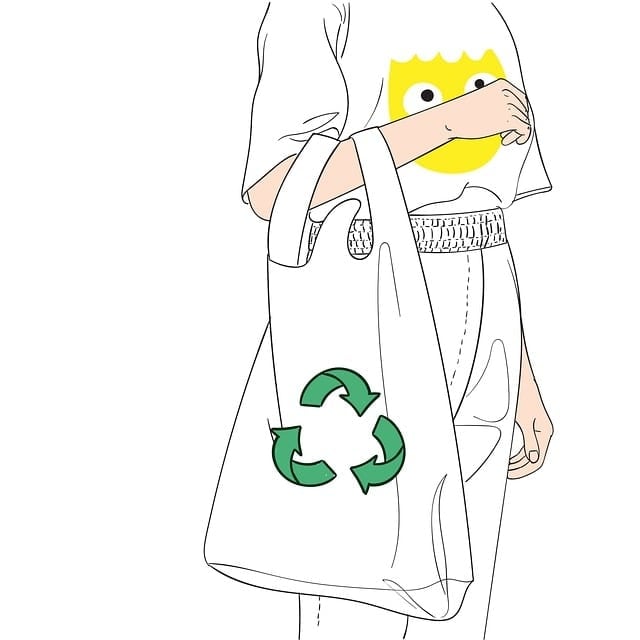Reusable packaging reduces waste by 70% and cuts carbon emissions by up to 60% compared to single-use alternatives, including the use of recycled materials. Research from 2025 shows that businesses adopting reusable packaging systems save 25-40% on packaging costs within two years. This shift isn’t just environmentally sound—it’s financially smart. As regulations tighten and consumer preferences evolve, companies implementing reusable packaging solutions are seeing customer loyalty increase by 35% and brand perception scores improve by 28%. The data is clear: reusable packaging delivers measurable benefits for both business sustainability goals and bottom-line results.
Save 80% of delivery management time
We handle everything:
- Dedicated operations manager
- Real-time tracking dashboard
- Automated customer notifications
- Urgent issue resolution
Why Is Reusable Packaging Gaining Traction?
Companies across industries are adopting reusable packaging to meet increasing consumer demand for sustainable options
73% of consumers are willing to pay more for products with sustainable packaging
Regulatory pressures and cost savings are accelerating the shift toward reusable solutions
In the growing e-commerce sector, reusable packaging has moved from a niche concept to a mainstream business strategy in 2025. The global reusable packaging market reached $156.7 billion in 2024 and is expected to grow at a compound annual growth rate of 7.8% through 2030, according to recent market analysis from Sustainable Packaging Coalition. This rapid growth reflects a significant shift in how businesses and consumers view packaging.
Circular Economy and Economic Forces Driving Adoption
The financial benefits of reusable packaging are becoming increasingly clear to businesses. Research from the Ellen MacArthur Foundation shows that companies implementing reusable packaging systems see an average 30% reduction in packaging costs over three years through repeated use. These savings stem from reduced material purchases, lower waste management fees, decreased shipping costs, and overall efforts to reduce costs.
Major retailers like Walmart and Target have committed to transitioning 50% of their private label products to reusable or easily recyclable packaging by 2026. This commitment has created a ripple effect throughout supply chains, pushing manufacturers to adapt. The food and beverage sector leads adoption rates, with personal care products following closely behind.
Supply chain resilience has also become a key factor. During recent material shortages, companies with reusable systems maintained operations more effectively than those dependent on single-use packaging. This practical advantage, including the optimization of storage space, has convinced many operations managers who were previously hesitant about making the switch.
Environmental Necessity and Regulatory Pressure
Environmental concerns have reached a critical point, making reusable packaging not just preferable but necessary. Recent studies indicate that packaging waste accounts for approximately 30% of total municipal solid waste in developed nations, particularly from single-use packaging. The Ellen MacArthur Foundation reports that without significant changes, there will be more plastic than fish in the oceans by weight by 2050.
This environmental reality has led to strict regulatory responses. In 2024, the European Union implemented the Single-Use Plastics Directive, imposing taxes on non-reusable packaging. Similar legislation has been adopted in 27 countries worldwide, with the United States introducing the National Packaging Reduction Act in early 2025, which will phase in packaging reuse requirements over the next five years.
Companies are finding that getting ahead of these regulations provides competitive advantages. Those who wait may face rushed implementation timelines and higher costs. A McKinsey study found that early adopters of sustainable packaging requirements spent 40% less on compliance than companies that delayed action until mandated.
Shifting Consumer Expectations
Perhaps the most powerful force behind reusable packaging’s growth is changing consumer behavior. Research from Nielsen shows that 73% of global consumers would change their consumption habits to reduce environmental impact, with 41% willing to pay more for products with sustainable packaging.
This shift is particularly pronounced among younger demographics. A 2024 study by the Sustainable Packaging Forum found that 82% of consumers under 35 consider packaging sustainability when making purchasing decisions, compared to 64% of those over 55. This generational difference signals a continuing trend toward sustainability demands.
The impact of these preferences is already visible in the market. Brands that have adopted reusable packaging systems have seen customer loyalty increase by an average of 21%, according to data from the Consumer Packaging Alliance. This demonstrates that sustainability efforts are no longer just an ethical choice but a business imperative.
Social media has amplified these trends, with packaging “unboxing” videos now frequently featuring commentary on sustainability. Brands with excessive or non-reusable packaging regularly face public criticism, while those with innovative reusable solutions gain positive exposure. This public discourse has accelerated the pressure on companies to adapt.
Technological Innovations are Making Reusable Systems Viable
Recent technological advances have addressed many of the practical challenges that previously limited reusable packaging adoption. Track-and-trace technologies using QR codes, RFID tags, and smart technologies for real-time tracking have made managing reusable packaging systems much simpler. Companies can now track return rates, optimize collection systems, and engage consumers through digital interfaces.
Materials science has produced durable, lightweight options that can withstand numerous use cycles while maintaining safety and performance. New antimicrobial coatings have addressed hygiene concerns, especially important in packaging applications. These innovations have expanded the range of products that can use reusable systems.
Digital platforms connecting consumers, retailers, and producers have streamlined the logistics of packaging returns. Apps like Loop and Algramo have created successful business models around reusable packaging, demonstrating viable alternatives to traditional single-use systems. These platforms report customer retention rates above 70%, suggesting strong consumer acceptance.
The COVID-19 pandemic initially slowed reusable packaging adoption due to hygiene concerns, but research by the New England Journal of Public Health confirmed that properly sanitized reusable packaging presents no additional health risks compared to single-use alternatives. This scientific validation has helped overcome hesitation among both businesses and consumers.
Why Is Reusable Packaging Better?
Reusable packaging reduces environmental impact with up to 60% less CO2 emissions.
Companies save money after initial investment through reduced waste management costs.
Brands gain customer trust by showing a real commitment to sustainability
Environmental Impact
The shift to reusable packaging represents one of the most direct ways businesses can reduce their environmental footprint. Research shows that reusable packaging systems cut greenhouse gas emissions by up to 60% compared to single-use alternatives. This reduction comes primarily from eliminating the continuous cycle of manufacturing, transporting, and disposing of single-use items.
When businesses implement reusable packaging, they significantly decrease solid waste generation. A single reusable container can prevent hundreds of disposable packages from entering landfills over its lifetime, reducing solid waste by up to 86%. This waste reduction is critical considering that packaging waste makes up approximately one-third of all municipal solid waste in developed countries.
The environmental benefits extend beyond emissions and waste reduction. The manufacturing process for reusable packaging using durable materials consumes 64% less energy compared to producing and recycling single-use alternatives. These energy-saving compounds compound with each reuse cycle, contributing to a circular economy and creating an increasingly positive environmental impact over time.
Water Conservation and Resource Efficiency
Water conservation represents another significant but often overlooked benefit of reusable packaging. The production of virgin materials for single-use packaging—especially paper and plastic—requires substantial water resources, highlighting the need to reduce packaging waste. Reusable packaging systems, including reusable pallets, can reduce water consumption by up to 80% over their lifecycle compared to disposable alternatives.
Resource efficiency improves dramatically with reusable systems, particularly through the use of standardized packaging. Rather than constantly extracting and processing raw materials for new packaging, businesses can focus on maintaining and recirculating existing materials. This shift supports the circular economy model, where resources remain in use for as long as possible before being recovered and regenerated at the end of each service life.
Reduces Packaging Waste and CO2 Emissions
The waste reduction potential of reusable packaging extends throughout the entire supply chain. When businesses switch from single-use to reusable packaging, particularly in distribution centers, they typically see immediate reductions in their waste management requirements. This includes less frequent waste collection, reduced landfill fees, and fewer resources dedicated to waste handling.
Carbon emissions decrease at multiple points in the supply chain. While the initial production of durable reusable packaging may require more resources than a single disposable item, this carbon investment is quickly offset through repeated use. Research indicates that most reusable packaging systems achieve carbon break-even after just a few use cycles, with every subsequent use representing net environmental savings.
For businesses shipping products regularly, the emissions reduction becomes significant at scale. A company shipping 1,000 packages weekly could prevent several tons of CO2 emissions annually by switching to a reusable system. These reductions help companies meet their carbon reduction goals while providing tangible environmental benefits that can be communicated to stakeholders.
Supports Sustainable Resource Usage with Innovative Materials
Reusable packaging systems fundamentally change how resources flow through business operations. Instead of the linear “take-make-dispose” model, reusable systems create closed loops where materials maintain their value for extended periods. This approach preserves natural resources by reducing the need for continuous raw material extraction and promoting environmentally friendly practices.
The materials used in reusable packaging are selected specifically for durability and longevity. High-quality plastics, metals, and composite materials can withstand hundreds or thousands of use cycles when properly designed. This durability stands in stark contrast to single-use packaging, which is often designed to be as lightweight (and therefore as fragile) as possible to minimize material costs.
Businesses implementing reusable packaging find they can optimize material usage in ways impossible with disposable packaging. For example, standardized reusable transport containers can be designed to maximize vehicle load efficiency, reducing the total number of shipments required and the associated fuel consumption. This optimization extends to storage efficiency as well, with uniform containers that stack securely and maximize warehouse space utilization.
Aligns with Global Environmental Goals
The adoption of reusable packaging directly supports multiple international environmental agreements and frameworks. The United Nations Sustainable Development Goals (SDGs), particularly Goal 12 (Responsible Consumption and Production) and Goal 13 (Climate Action), align perfectly with reusable packaging systems that minimize waste and reduce carbon emissions.
Recent international climate agreements emphasize the need for businesses to reduce emissions across their value chains. Reusable packaging represents a concrete, measurable way for companies to contribute to these goals. As governments worldwide implement more stringent environmental regulations, businesses with established returnable packaging systems will find themselves ahead of compliance requirements.
Cost Savings Over Time
The financial case for reusable packaging becomes increasingly compelling as systems mature. While the initial investment in durable packaging may exceed that of disposable alternatives, the total cost of ownership, particularly with the integration of smart technologies, typically favors reusable systems after multiple use cycles. This pattern holds across industries from retail to manufacturing to healthcare.
For many businesses, waste management represents a significant and growing expense. Landfill tipping fees have increased steadily in most regions, and regulatory requirements for waste handling continue to become more stringent. Reusable packaging systems directly reduce these costs associated with plastic packaging by minimizing the volume of waste generated. A manufacturing facility that previously filled multiple dumpsters weekly with packaging waste might reduce its waste stream by 80% or more after implementing reusable containers.
The financial benefits extend beyond direct waste reduction. Standardized reusable packaging typically improves handling efficiency throughout operations, as customers often prefer to use their own reusable containers. Workers spend less time breaking down cardboard boxes and disposing of packaging materials. Warehouse space previously dedicated to waste management can be repurposed for value-adding activities.
Long-Term Financial Benefits
The long-term financial benefits of reusable packaging often exceed initial projections as businesses discover secondary advantages. One key benefit is the reduction in product damage rates. Reusable packaging and various reuse models are typically designed with superior protection capabilities compared to single-use alternatives, resulting in fewer damaged products and associated replacement costs.
Insurance costs may decrease as well. Businesses with established reusable packaging systems often experience fewer workplace injuries related to packaging handling. The elimination of box cutters, packaging debris, and impromptu disposal methods reduces accident risks. Additionally, properly designed reusable packaging can reduce ergonomic injuries by incorporating handles, appropriate sizing, and other user-friendly features.
For businesses that ship products internationally, reusable packaging can simplify compliance with varying international regulations regarding packaging materials. Rather than maintaining different packaging for different markets, companies can develop standardized reusable solutions that meet the most stringent global requirements, reducing complexity and administrative overhead.
Initial Investment vs. Recurring Savings
The upfront investment in reusable packaging represents the primary financial barrier for many businesses. High-quality reusable containers typically cost more per unit than disposable alternatives. This price differential varies widely depending on the materials and design specifications, but businesses should expect to pay several times more for durable reusable options.
However, this initial cost difference rapidly diminishes when viewed over multiple use cycles. A reusable shipping container that costs five times more than a cardboard box but lasts for 50 shipments ultimately costs just 10% per use. The economics become even more favorable when including the avoided costs of purchasing, storing, and disposing of single-use alternatives.
Many businesses find that the break-even point occurs sooner than anticipated. A typical reusable plastic container might pay for itself after just 10-15 use cycles when all costs are considered. After this point, each subsequent use represents direct savings compared to disposable alternatives. For high-volume operations, these savings can amount to hundreds of thousands of dollars annually.
Impact On Supply Chain Efficiency
Beyond direct financial comparisons, reusable packaging drives operational improvements throughout the supply chain. Standardized containers with consistent dimensions optimize transport vehicle loading, potentially reducing the number of shipments required. This translates to lower freight costs, reduced fuel consumption, and decreased logistics complexity.
Warehouse operations become more efficient with uniform, stackable containers. Space utilization improves as standardized containers allow for more systematic storage arrangements. Handling time decreases since workers become familiar with consistent packaging formats rather than dealing with variable disposable packaging. Inventory management improves as standardized containers can incorporate tracking features like RFID tags or QR codes.
The predictability of reusable packaging dimensions also enables increased automation throughout the supply chain. Automated storage and retrieval systems work most efficiently with standardized container sizes. Conveyor systems, robotic handling equipment, and other automation technologies can be optimized around consistent packaging specifications, further improving operational efficiency.
Improved Brand Image and Customer Trust
Companies adopting reusable packaging frequently report improved brand perception among customers and other stakeholders. In an era where environmental claims face increasing scrutiny, reusable packaging represents a visible, tangible commitment to sustainability and a sustainable future rather than vague promises or offset purchases.
Research indicates that 73% of global consumers would change their consumption habits to reduce environmental impact. By implementing reusable packaging, businesses provide customers with a clear way to align their purchasing decisions with their environmental values. This alignment builds trust and strengthens customer relationships, particularly among environmentally conscious market segments.
Reusable packaging programs also create additional customer touchpoints and opportunities for relationship building. When customers return packaging for reuse, this transaction offers another opportunity for a positive brand interaction. Smart businesses leverage these moments to gather feedback, offer rewards for participation, and reinforce their sustainability message.
How Does Reusable Packaging Attract Customers?
Research shows 78% of U.S. shoppers prioritize sustainable brands
43% of consumers will pay extra for products with sustainable packaging
Companies using reusable packaging build stronger customer loyalty and gain competitive advantages
Consumer Preferences
The shift toward sustainability has transformed from a niche interest to a mainstream expectation. Research from 2025 shows that 43% of consumers are willing to pay extra for products with sustainable packaging. This represents a significant market segment that values environmental responsibility over price alone. What’s more striking is that 70% of consumers refuse to swap sustainable packaging for cheaper alternatives, even when facing cost pressures. This indicates that sustainability has become a non-negotiable factor for many shoppers.
The demographic breakdown reveals important patterns for businesses to consider. Younger consumers are leading this shift, with 65.7% of those aged 18-29 considering sustainability a key factor in purchasing decisions, including the use of reusable shopping bags. While this engagement gradually declines with age, it remains significant across all demographic groups. This trend suggests that as these younger consumers gain more purchasing power, the demand for sustainable packaging and used packaging will only strengthen.
Customer Loyalty and Brand Image
When companies commit to reusable packaging, they don’t just reduce waste—they build customer relationships that last. Research shows that 63% of buyers are more likely to purchase from brands that have publicly announced sustainability goals. This creates a powerful incentive for companies to not only implement sustainable practices but also to communicate these efforts clearly to their customer base.
The connection between reusable packaging and brand loyalty works through several mechanisms. First, consumers feel they’re participating in something meaningful when they choose sustainable products. This emotional connection creates stronger brand affinity than purely transactional relationships. Second, reusable packaging often requires a system of return or refill, creating multiple touchpoints between the customer and brand. Each interaction reinforces the relationship and increases the likelihood of repeat purchases.
Companies that adopt reusable packaging gain a competitive edge in increasingly eco-conscious markets. As one industry expert notes: “When we go to present our business cases to our senior leadership, we also look at the sustainability impact, the carbon impact, how many trees, logs, and paper we’re saving by using a returnable packaging solution versus corrugate…” This strategic approach helps businesses differentiate themselves while addressing growing consumer concerns about environmental issues. The data backs this up: products making Environmental, Social, and Governance (ESG) claims have seen an average growth of 28% over five years, indicating that sustainability-driven brands are being rewarded by consumers.
Transparency and Consumer Trust with Reusable Packaging Solutions
Transparency has become a critical factor in how reusable packaging attracts customers. Research indicates that 82% of consumers are aware of the sustainability goals of the brands they buy from. This high level of awareness demonstrates that consumers are doing their homework before making purchasing decisions, seeking out brands that align with their values.
Companies that communicate their sustainability goals and progress build trust with consumers. This transparency takes many forms: detailed information on packaging materials, clear instructions for reuse or return, and honest reporting about environmental impact. Each element contributes to a perception of authenticity that modern consumers value highly.
Trust translates directly to purchasing behavior. When consumers believe a company is genuinely committed to sustainability rather than merely “greenwashing,” they’re more likely to become loyal customers. This trust premium is especially valuable in competitive markets where product differentiation may otherwise be minimal, especially considering the need to reduce multiple shipments. By providing transparent information about their reusable packaging systems, companies can transform skeptical shoppers into brand advocates.
Social Proof and Community Building
Reusable packaging creates opportunities for brands to build communities around shared environmental values. When customers participate in reuse programs, they become part of a visible community of like-minded individuals. This social aspect adds value beyond the product itself and creates powerful word-of-mouth marketing opportunities.
The psychology of social proof works strongly in favor of sustainable packaging. When consumers see others using reusable packaging, it normalizes the behavior and reduces barriers to adoption. This effect is amplified through social media, where consumers often share their sustainable purchases and practices, including those related to takeaway food. Brands can leverage this by creating packaging that is not only reusable but also visually distinctive and shareable across various industries.
Community-building strategies around reusable packaging might include loyalty programs that reward returns, online forums where customers can share reuse ideas, or in-store events focused on sustainability. Each approach strengthens the emotional connection between customer and brand while expanding the reach of sustainable practices.
Practical Considerations and Consumer Experience
While environmental benefits are important, practical considerations often determine whether consumers will embrace reusable packaging. The most successful systems balance sustainability with convenience, making the reuse process simple and rewarding for customers.
Design plays a crucial role in consumer adoption. Reusable packaging that is durable, easy to clean, and functionally superior to single-use alternatives provides value beyond environmental benefits. For example, glass containers that can go from freezer to microwave offer practical advantages that plastic single-use packaging cannot match. Similarly, reusable shipping containers that collapse for easy storage solve practical problems for consumers.
The return or refill process must be seamless to maintain customer participation. Companies have developed various approaches, from deposit systems to mail-back programs to in-store refill stations. Each model has advantages depending on the product category and target customer. Retailers have found success by creating dedicated reusable aisles or store sections featuring reusable versions of products, which can attract new customers or increase visits from existing ones.
Economic Benefits for Customers
Beyond environmental considerations, reusable packaging often offers economic benefits that attract cost-conscious consumers. While the initial purchase may include a premium for durable packaging, the long-term savings can be substantial, especially for frequently purchased items.
Refill systems typically offer discounted prices compared to buying new packaging each time. These savings accumulate over time, creating a financial incentive for continued participation. Many brands structure their pricing to make this advantage clear to consumers, highlighting the per-unit cost savings of choosing refillable options.
Deposit return systems provide a different economic model, where consumers pay a premium upfront but receive a refund when returning the packaging. This approach has proven effective in beverage container recycling and is expanding to other product categories. The deposit creates a financial incentive for return while ensuring the company can maintain its packaging inventory.
For budget-conscious consumers, the durability of reusable packaging offers additional value. A well-designed reusable container might serve multiple purposes in the home after its original contents are consumed. This extended utility, particularly through the use of reusable pallets, represents added value that single-use packaging cannot match. Smart brands design their packaging with new materials and this secondary use in mind, creating containers that consumers will want to keep and reuse independently.
Reusable Packaging Systems For Environmental Benefits
As we look toward 2025, reusable packaging is more than a passing trend—it’s becoming an essential business strategy. The research is clear: businesses that adopt reusable packaging systems see measurable benefits in reduced environmental impact, long-term cost savings, and strengthened customer relationships. With global regulations tightening and consumer preferences shifting decisively toward sustainable options, companies that resist this change risk falling behind.
The path forward may require initial investment and logistics adjustments, but the return extends beyond financial gains. Companies that embrace reusable packaging today are positioning themselves as leaders in an economy where sustainability is increasingly tied to business success.
Remember that every packaging decision sends a message to your customers about your values. As innovative materials and technologies continue to emerge, the opportunities to create truly circular packaging systems will only expand.
The question isn’t whether your business should consider reusable packaging—it’s how quickly you can implement it. Your customers, your bottom line, and our planet are all waiting for your answer.














